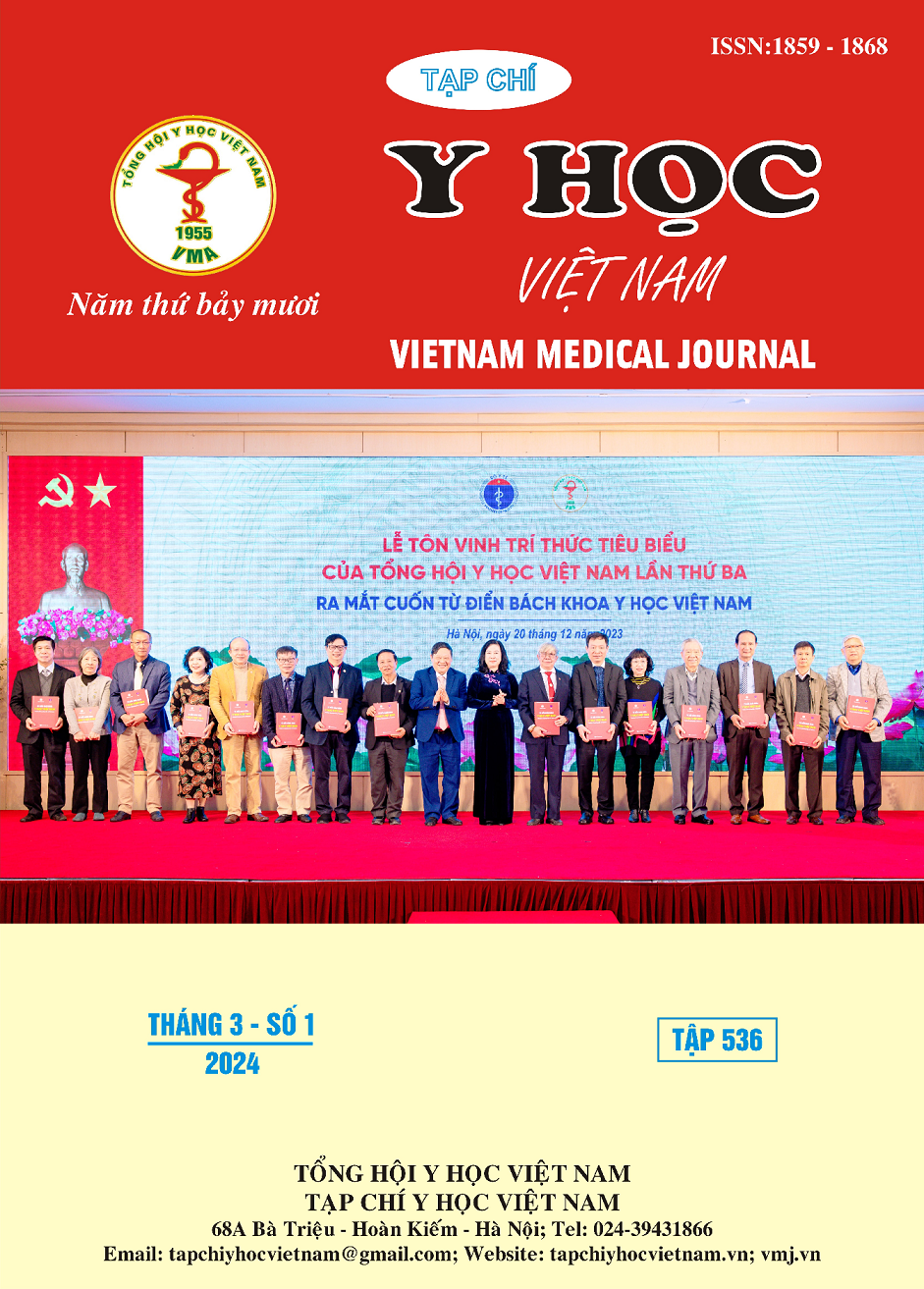SUPERSELECTIVE RENAL ARTERY EMBOLIZATION MANAGEMENT OF POST-PERCUTANEOUS NEPHROLITHOTOMY HEMORRHAGE
Main Article Content
Abstract
The purpose of this study was to describe the clinical and laboratory features evaluate the therapeutic efficacy and safety of superselective renal arterial embolization (SRAE) in the treatment of patients with renal hemorrhage after percutaneous nephrolithotomy (PCNL). From January 2019 to May 2023, data of 32 consecutive patients with SRAE management of post-PCNL hemorrhage were retrospectively analyzed. The mean age of patients was 51.6 ± 10.3 years and There were 11 patients (34.4%) who had chronic diseases. The mean interval between surgery and the angiography was 11.3 ± 7.6 days. Hematuria was the most common symptom (100%), followed by flank pain (56.3%), red fluid in the drainage bag (15.6%) and 3 patients (9.4%) with blood loss shock. The mean reduced hemoglobin was 3.4 g/dl and blood transfusion rate was 37.5%. There were 29 patients (90.6%) who received computed tomography (CT) before angiography and 28 out of total patients (96.6%) detected bleeding foci. The most common bleeding site was mid-pole with 43.8% and the most common angiographic finding was pseudoaneurysm (62.5%). Bio glue was the most commonly used plug material (75.0%). There were 31 pastients (96.9%) required only one session of SRAE and 1 patient (3.1%) needed two sessions. The initial success rate of embolization was 96.9% after the first SRAE and this figure rose to 100% after second SRAE. There were 43.8% patients presenting with post-embolization syndrome. Post-embolization hospital stay was 5.8 ± 3.6 days. It was evident from the study that SRAE is an efficacious and safe procedure in treatment of post-PCNL hemorrhage.
Article Details
References
2. Bookstein JJ, Ernst CB. Vasodilatory and vasoconstrictive pharmacoangiographic manipulation of renal collateral flow. Radiology. 1973;108:55–9.
3. Kim HY, Lee KW, Lee DS. Critical causes in severe bleeding requiring angioembolization after percutaneous nephrolithotomy. BMC Urol. 2020;20:22.
4. El-Nahas AR, Shokeir AA, Mohsen T, et al. Functional and morphological effects of postpercutaneous nephrolithotomy superselective renal angiographic embolization. Urology. 2008;71:408–12.
5. Mao Q, Wang C, Chen G, et al. Failure of initial superselective renal arterial embolization in the treatment of renal hemorrhage after percutaneous nephrolithotomy: a respective analysis of risk factors. Exp Ther Med. 2019;18:4151–6.
6. Nikolaos Ferakis and Marios Stavropoulos. Mini percutaneous nephrolithotomy in the treatment of renal and upper ureteral stones: Lessons learned from a review of the literature. Urol Ann. 2015;7(2):141–148.
7. Gadzhiev N, Malkhasyan V, Akopyan G, et al. Percutaneous nephrolithotomy for staghorn calculi: Troubleshooting and managing complications. Asian Journal of Urology. 2019;7(2):139-148.
8. Ran R, Zhang R, Xie Y, et al. Decreased hemoglobin as a quantifiable indicator of renal arterial embolization in post-percutaneous nephrolithotomy hemorrhage. Urolithiasis.2020;49(2):137-143.
9. arvind pg, darshan hs, sanika ag, et al. role of multi-detector computed tomography (mdct) in management of post percutaneous nephrolithotomy (pcnl) bleeding. f1000research. 2013;2:253.
10. Choi MJ, Kim PH, Shin JH, et al. Angiographic management of percutaneous renal procedure-related bleeding: a singlecenter experience. Int J Urol. 2019;26:406–12.


